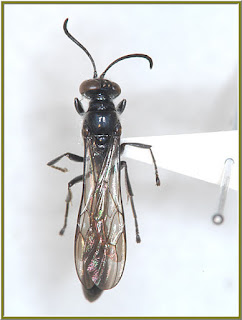Considering the significance of sex ratios (the number of available males compared to that of available females in a given population) there is little wonder why organisms take into account such gender proportions in conjunction with family planning prior to establishing a nest, clutch or natal patch. Simplistically, the idea is that if there is already an abundance of males in a population, it may be best to produce mostly female offspring as a means of optimizing chances for passing on genes to future generations. Similarly, if there is a surplus of females, the best strategy may be to produce male offspring in order to maximize that offspring’s chances for finding future reproductive mates.
NOTE: For the sake of clarity, most organisms do not literally engage in family planning per se, generally the decision to reproduce, and to what extant to do so, is a product of hereditary response to physical characteristics of local ecology and sociality – evolution. Nevertheless - for the purpose of this blog - reproductive planning can metaphorically be considered as an individual choice.
Of course this is a very rudimentary view of sex ratios and doesn’t take into account the differential expenses associated with producing gametes, seeking-out mates, rearing young or competing with sexual rivals; these investment considerations would greatly impact any ratios. But, in general if one were to weigh the total costs and benefits of producing offspring of either sex - in a given environment - the ratio of males to females - on average - would be one to one (1:1). However, as hinted above, there are several exceptions to this rule; one such exclusion being “local mate competition.”
Chiefly, local mate competition (LMC) proposes that under circumstances with tightly controlled sex ratios, limited out-breeding and where sexual rivals are likely to be close relatives, it is to the benefit of the mother to produce only enough males as is necessary to inseminate available females. Although LMC can be relevant in any location with limited dispersal of organisms, it is most easily understood in situations relating to inbreeding populations.
As a hypothetical example, if a female is to produce 10 offspring in any combination of male and female - and she knows in advance that it is highly likely that the offspring will inbreed with each other – it may be best to produce one male and nine females as opposed to maintaining a 1:1 sex ratio with five males and five females. Through this strategy, mate competition between rival males will be eliminated and nine females could potentially become mothers themselves thereby maximizing the total number of second generation offspring produced – ultimately, more genes are passed on to future generations.
Contrastingly, if the female were to forego the tenants of LMC and instead choose to maintain a 1:1 sex ratio, five brothers with parallel gene compliments would waste valuable energy trying to out-compete each other for access to the five available sisters. Regardless of which of the five males eventually succeeded, in the end only a maximum of five females could go on to reproduce as mothers.
Following this rationale, numerous arthropods, as well as several other organisms, exhibit the ability to selectively determine the sex ratios of their offspring; however, more than any other organism wasps serve as the classic example of LMC.
One wasp, Trypoxylon malaisei, constructs its nest in a very unique way. The female Trypoxylon malaisei lays eggs along the interior of its tube shaped trap-nest. Starting at the inner most point of the tube, the wasp inserts its ovipositor and lays an egg that is destined to become a daughter, next to this first egg a second daughter egg is deposited and then a third, fourth and so on, arranging the eggs along a single line side-by-side until reaching the exterior portion of the tube nest. Once at the end, the mother wasp will lay one or two final eggs which will become sons (male wasps). When the eggs hatch, the male offspring mates with its numerous female siblings - the sex ratio is perfectly designed (via evolution) to maximize insemination of the female offspring and to insure second generation fecundity.

Another wasp, the parasitoid Goniozus nephantidis utilizes a similar strategy when laying eggs within the integument of prey caterpillars. Typically, the wasp will inject approximately 18 eggs into its paralyzed host, of these only one or two are predestined to be male. On hatching and reaching sexual maturity all will inbreed - some even prior to exiting the comfortably nutritious host.
Through even greater levels of adaptation, driven by competition, other parasitoid wasps improve on the tactics of sex ratio exploitation. Using sensitive chemo-detection, these wasps seek out prey species, such as caterpillars, that are already serving as incubators with the eggs of a rival wasp. To these already occupied hosts the newly arrived expectant mother will inject only male eggs that on hatching devour the other male competitors and breed with the remaining females.
Other exceptions to the 1:1 sex ratio will be explored in later editions of the Socio-Ecological Reproductive Strategy series.
Ian C. W. Hardy, James M. Cook (1995). Brood sex ratio variance, developmental mortality and virginity in a gregarious parasitoid wasp Oecologia, 103 (2), 162-169 DOI: 10.1007/BF00329076
Ian C. W. Hardy, Paul J. Ode, Michael R. Strand (1993). Factors influencing brood sex ratios in polyembryonic Hymenoptera Oecologia, 93 (3), 343-348 DOI: 10.1007/BF00317876
Shintarou Oku, Takayoshi Nishida (2001). Presence of Single-Sex Broods Under Local Mate Competition in(Hymenoptera: Sphecidae): Adaptation or Maladaptation?Annals of the Entomological Society of America, 94 (4), 550-554 DOI: 10.1603/0013-8746(2001)094[0550:POSSBU]2.0.CO;2
John H. Werren, Giuseppina Simbolotti (1989). Combined effects of host quality and local mate competition on sex allocation inLariophagus distinguendus Evolutionary Ecology, 3 (3), 203-213 DOI: 10.1007/BF02270721





























No comments:
Post a Comment